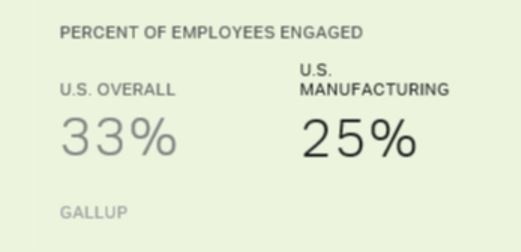In a recent blog, I wrote about employee expectations and the fact that only 50% of all employees know what’s expected of them. That is really a startling number. In working with several manufacturing companies, I’ve found that this isn’t just true of the employees on the shop floor, but also of the management team.
Manufacturing companies have the added issue that employee engagement among manufacturing companies is lower than other industry sectors.

This lack of clarity on who is responsible for what can have a real impact on the bottom line of the business, on your stress as the business owner and finally on overall employee engagement (but we’ll leave that topic for another day).
When lines of accountability are not clear, confusion rules and you can get sucked into responsibilities that really should be assumed by other members of your team. It’s also stressful for your team because they really don’t know what is most important and how success is measured.
So how do you drive a higher level of accountability and in turn have LESS stress? Here’s how.
Ensure Each Employee Knows The Top 3-5 Goals Of The Business
It’s seems simple, but I continue to be amazed at the number of businesses that just don’t clearly articulate the top 3-5 company goals to their team. Management just expects everyone to “know” what is most important.
I was speaking with a customer recently who said that they have a strategic plan and their top goal was to grow to $XM in sales with $Y% profit over the next 5 years. “That’s Great!”, I said. He then showed me a list of 12 things (I’ll call them “things” because they really were not goals nor were they SMART goals) that the team had agreed to do which the leadership thought would help the company deliver the growth outcome.
When I asked how he would know when they achieved one of those “goals”, he really didn’t know.
Now, this was the leader of the company. How well do you think the other members of the team could articulate the goals or areas of focus?
If this sounds familiar, don’t feel bad. It’s pretty common. Business has a way of pulling us into the urgent and away from the important. Business leaders must work really hard to articulate where they are bringing the business.
Develop An Employee Accountability Chart
Once you’ve driven clarity around the top 3-5 goals that your business is going to focus on, the next step in driving accountability involves creating clarity around the key responsibilities for each member of your team.
The chart is pretty simple and contains the following:
- Employee Name
- Role
- Top 3-5 Key Responsibilities – In other words, what was this person hired to do (by the way it can’t be “whatever I tell them”)?
- Top 3 KPIs (key performance indicators) – How will you objectively measure their success? How will they know when they’ve been successful?
- Who reports to this role? – Who does this role manage?
- Who supervises this role – Who manages this role?
Clarify Employee Accountability By Clarifying The Reporting Structure
I’ve written about this before, but “macro-managing” does not work and causes confusion and frustration. Macro-managing is where a manager just lets their team “figure it out”. There aren’t any clear reporting lines.
Every member of your team needs to know who they report to. Literally, who they are accountable to.
If this is not clear, accountability will be weak (or not exist).
Who do each employee report their results to? Who does their performance review? Who do they speak to at least weekly to vent and get support?
Again if this part is not clear, all roads will lead back to you, increasing your stress. This also robs your team of valuable learning opportunities.
Is this process perfect? Absolutely not, but you need to start somewhere. There may even be roles that you need to play until you hire someone to take over that role.
If there is ANY confusion around who is responsible for each result in your business, you will not achieve the results you’d like to accomplish. As a leader your job is to drive clarity around your vision and how the team will work together to achieve that vision. Having a clear accountability chart can help you bring that clarity to drive results.
{{cta(‘bdd3cc6c-1991-44e7-891d-13b8a3fcf03f’)}}
Drive Employee Accountability By Meeting Weekly To Review Results
If you’re at all familiar with lean and continuous process improvement, you know about meeting rhythm and how meetings (if done correctly) can drive real improvement. These meetings give you an opportunity to review the results of the team. With clarity on “who owns what” these meetings also drive accountability. You may be frustrated about the results for your current meeting due to a lack of accountability.
Still need help with your accountability chart? We can help. Contact us today.
